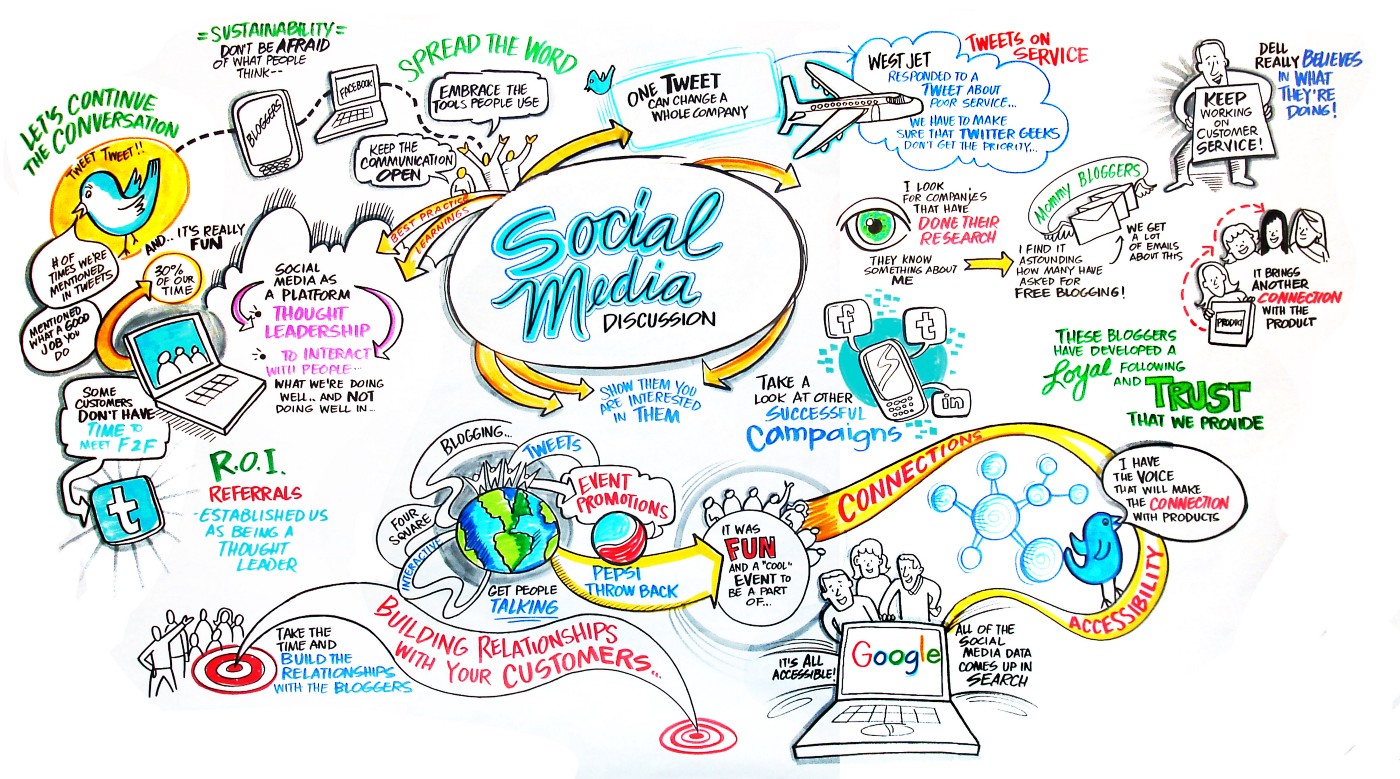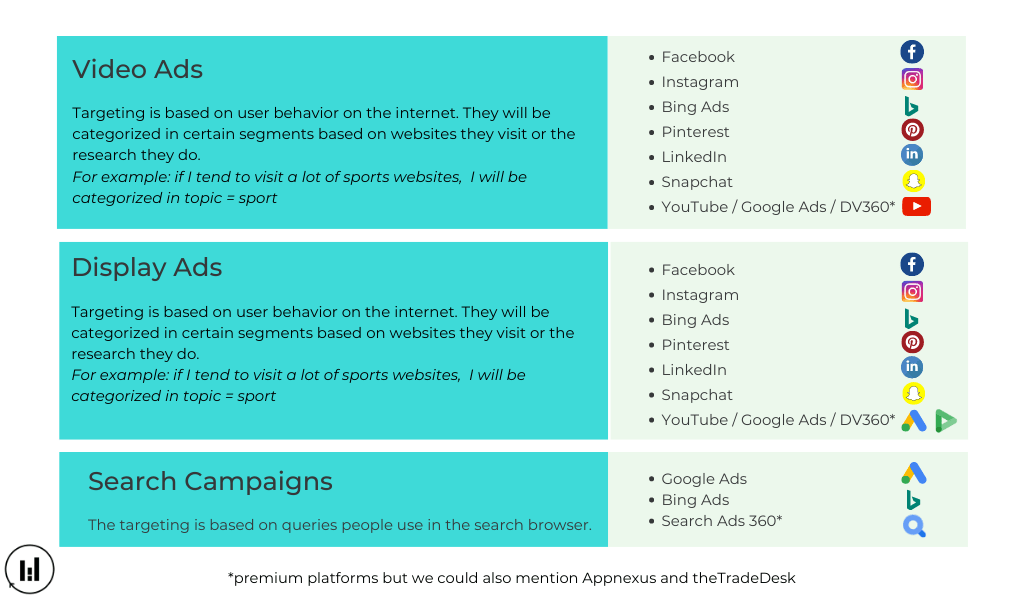
Native advertising combines digital and traditional advertising in one integrated campaign. A sponsored article can be used as a landing page, and native ads can be used to promote it on other pages and websites. This can result in a high return-on-investment. Native ads will draw attention to the prospect's brand while infographics and videos will help them with their information needs. These are some of the best ways to advertise with native ads.
Create a story about native ads
Think about what your audience is looking for when creating a story to promote a native advertisement. If your native ad is on the web, you can focus on driving traffic to a landing page. You should drive traffic to landing pages if your native ad is displayed on a mobile device. This is where your visitors will complete their conversion process.

Promote native ads on a platform that is relevant to your message. For instance, Scientology used a sponsored post to promote its new seed collection. While the ad was seamlessly integrated into the content of the site the user could easily confuse it with a genuine article. Native advertising should be done in a way that is effective.
CPMs for native advertising units
In a world where ad fatigue is a real problem, native ad units are a perfect solution. Native ad units don't wear out your audience like traditional display ads. You can easily test your ad creatives and determine which offer or content converts best. Quality traffic is essential to maximize the potential of this format. Based on the traffic you have, native ad CPMs may range from $4-9.
Before you choose one format, it is important to test them all. Although native ad units can have a range of metrics, they must be clearly identified as such and the advertiser. Adweek, for instance, will identify a native Ad in their email newsletter as a brand ad using "Brandshare. SAS," the publisher’s native marketing platform and partner.
Mobile-responsive advertising
You can target ads based upon the size and orientation of the mobile-responsive ad. This type advertising works well for responsive layouts that are optimized for mobile devices. These are some tips to help you create a mobile-responsive advertisement. Make sure you test your ad on different devices before creating it. You can resize your browser window and visit the site using a mobile device to see how your ads look.

First, you need to determine the screen sizes of your visitors and what device types they use. You should ensure that your ads display well on every screen. Be aware that ads sizes will differ depending on device. You need to make sure your ads work well on every device. Responsive advertisements can be made using CSS and JavaScript. These ads can be tailored to fit the advertiser’s needs. Follow Google's guidelines to make your mobile-responsive ads. They differ from the desktop versions.
Research is important before you publish a native advertisement.
Native advertising is an effective form of content marketing. It blends seamlessly into the user's experience and is not intrusive. This is especially useful for millennials, who grew up in digital media. Native ads are especially important for this age group, which is the largest customer demographic. Here are some suggestions to make your native ads effective. - Create high-quality content.
- Understand your target audience. The most successful native ads look and feel like organic content. They should be able to mimic the surrounding content. A new trend in dieting may be disguised to appear as an advertisement. Because native ads are not considered ads by consumers, they may be disguised as sponsored content. A general audience should also be targeted by the content.
FAQ
How much does it cost to advertise on social media?
If you decide to go this route, you should know that social media advertising is not free. Based on the time spent on each platform, you will be charged monthly.
Facebook - $0.10 per 1000 impressions
Twitter: $0.20 per 1,000 impressions (if your tweet is on Twitter)
If you send out invitations to Linkedin, $0.30 per 1,000 impressions
Instagram - $0.50/1000 impressions
Snapchat - $0.60 per 1,000 impressions ($0.40 per user)
YouTube - $0.25 Per 1,000 Views
Tumblr $0.15 for 1,000 impressions text posts
Pinterest - $0.05 per 1,000 impressions per month
Google + - $0.15-$0.20 per 1 million impressions
Tumblr: $0.15-$.20 per 100,000 impressions
Vimeo - $0.20- $0.25 per 10,000 impressions
Soundcloud: $0.20-$0.25 Per 1 Million Plays
StumbleUpon - $0.20 -$0.25 per 1 billion pageviews
Digg – $0.20 - 0.25 per 1000 diggs
Reddit: $0.20-$0.25 for 1000 comments
Wordpress - $0.20 - $0.25 for 500 comments
Flickr - $0.20 -- $0.25 per 5,000 photo uploads
How can I choose my target audience
Begin with you and your closest friends. Do you not know where to start? Ask yourself "Whom do I want to reach?"
Ask yourself the following questions: Who are my industry's most influential people? What are the problems they face daily? What are their top talents? You can find them online.
Take a look back at how you started your company. Why did you start? What problem solved you for yourself? How did that happen?
These answers will help to identify your ideal clients. This will allow you to learn more about your ideal customers and their motivations for buying from you.
You can also look at your competitors' websites and social media pages to find clues about whom they cater to.
Once you identify your target customers, then you must decide which channels to use to reach these people. A website might be created to reach home buyers, for instance, if your business provides services to agents in real estate.
If your company provides software to small businesses, you might consider creating a blog for those owners.
If you sell clothing, you could create a Facebook page for teens. If you own a restaurant, you can set up a twitter account to provide information for parents searching for child-friendly options.
The point here is that there are many ways to get your message across.
What should you know about printing advertising?
Print advertising is an effective way to reach consumers. Print advertising is used by many companies to promote their products and services. The goal is to get the consumer's attention.
Print ads are usually one-page long. They contain text, images, logos, and any other graphics. These ads may include sound, animation and video as well as hyperlinks.
The following are the main types print advertisements:
1. Brochures: These large-format printed pieces are meant to draw customers into stores. Brochures are filled with eye-catching designs, colorful pictures, and attractive graphics.
2. Catalogues - These are smaller versions of brochures. They are sent to customers who have requested specific information.
3. Flyers - These are small pieces of paper distributed at events such as concerts and fairs. They are generally free but must be paid for if they are handed out at retail outlets.
4. Posters - These are larger versions of flyers. They are often displayed on walls, fences, or buildings. These are often created with computer software programs to grab the attention of passersby.
5. Direct mail - These are letters or postcards that are sent directly to potential customers. Companies send these out periodically to remind existing customers about their business.
6. Newspaper Ads are placed in newspapers and magazines. They are usually quite long and contain both text and images.
What information do you need about internet advertising
Internet advertising has become an integral part any business strategy. It is a cost-effective way for companies to reach potential customers. There are many options for internet advertising. Some are free while others may require payment.
There are many other ways to advertise online. Each method comes with its own set of advantages and disadvantages.
What is branding?
Branding is how you convey who you really are and what you believe in. It is how you make people recall you when they hear you name.
Branding is about creating a unique identity that distinguishes your company. A brand is not just a logo but also includes everything from your physical appearance to the tone of voice used by employees.
A strong brand helps customers feel confident in buying from you because they know exactly what they're getting. This gives customers the confidence to choose your products over other brands.
A good example of a well-branded company is Apple. Apple is a well-known brand for its elegant design, high quality products and excellent customer service.
Apple has been synonymous with technology since its inception. Apple is what people think about when they see a smartphone, computer or tablet.
It is a good idea to create a brand prior to starting a new company. This will give your business a face and personality.
Is it possible to get traffic for free?
Refers to traffic that comes from organic search results, without the need for advertising. This traffic is known as natural or organic traffic. There are many options to get free traffic like article marketing and social media marketing.
Article Marketing is one of the most popular methods of getting free traffic because articles have an extremely low cost per click (CPC). Paying for ads is often more expensive than CPC. Article marketing is also called content marketing.
Social Media Marketing – Social media platforms like Facebook, Twitter and LinkedIn let you promote your business via advertising. These social media platforms can be used to post updates and share photos. You may also build relationships with potential customers. Many businesses decide to purchase advertising space on social media sites to reach a wider audience and at a much lower cost.
Blogging - Another great way to generate traffic is blogging. Quality content that is enjoyable to read will attract people. You can sell products and services once you have attracted visitors to your blog.
Email Marketing - Although email marketing has been around since before the advent of the Internet it is still one of the most effective ways to drive traffic and sales to your site. Regular email marketing is a great strategy to increase your subscribers and ultimately sell something.
What should you know about TV advertising?
Television advertising can reach a lot of people quickly and is very effective. It was also very costly. It is powerful, however, if it is used well.
There are many different types of TV ads, but they all have certain common characteristics. You must ensure your TV ad fits within the category it is being placed. You shouldn't attempt to make a lifestyle commercial the same as a product ad. Your message should be consistent throughout the entire campaign.
The second thing to remember is that the best time to air your ads is during prime-time hours. This is because many viewers are able to relax in front of the TV while watching. You want them to be comfortable enough to listen to your words.
You don't have to be rich to achieve great results. It may be the reverse. A study conducted by the University of California found that commercials aired during popular shows were less likely to sell products than those aired during unpopular shows. Make sure you are doing it right if you're spending a lot on TV advertising.
Statistics
- It's 100% reliant on your website traffic. (quicksprout.com)
- In 1919 it was 2.5 percent of gross domestic product (GDP) in the US, and it averaged 2.2 percent of GDP between then and at least 2007, though it may have declined dramatically since the Great Recession. (en.wikipedia.org)
- Worldwide spending on advertising in 2015 amounted to an estimated US$529.43 billion. (en.wikipedia.org)
- It collects money from the advertisers, keeps 32% for its role in facilitating the process, and the remaining 68% goes to the publisher (you). (quicksprout.com)
External Links
How To
How to run paid ads
Paid Advertising is any marketing activity that involves paying money. This could be purchasing advertising space on the internet, placing ads in newspapers and magazines, as well as paying someone to promote you business online. There are many forms of paid advertising. These include social media marketing, email marketing and display advertising.
You need to know the cost of your campaign and the expected results. This will ensure that it runs smoothly. You also want to consider whether or not you'll get enough return on investment (ROI) to justify the cost.
Before you start a paid advertising campaign, it is important to identify potential customers for your product or service. If you do not know, you can begin with free advertising by posting flyers in your neighborhood, making announcements to schools or sharing your message on social networks.
Once you know your target audience, you can decide on the best way to reach them. For example, if you sell organic food, you may want to advertise in local newspaper classifieds. You might also advertise on radio or TV if your product is cosmetics.
Once you have decided on the person you want to reach, figure out what you can spend. There are several methods you can use to calculate your spending budget. You can divide your budget into daily, weekly and monthly amounts. You can also use a spreadsheet program.